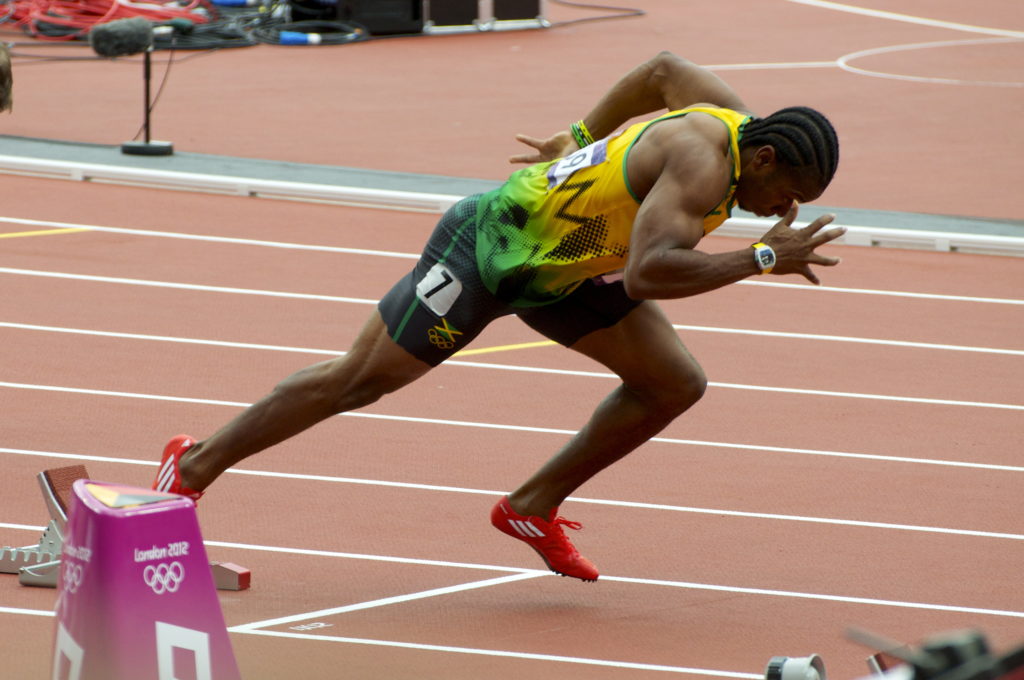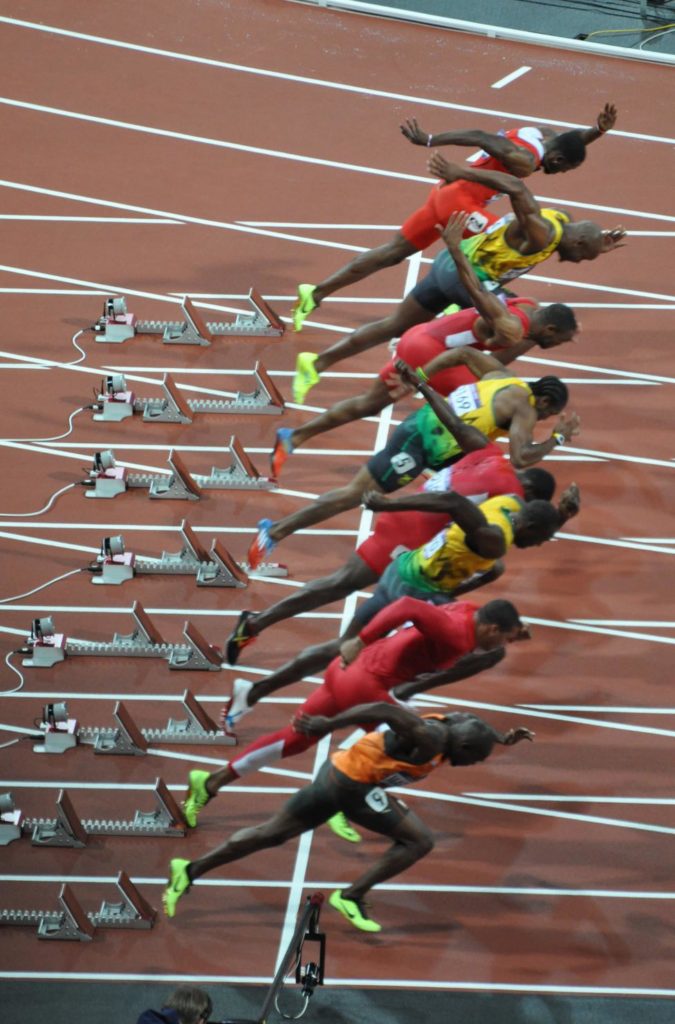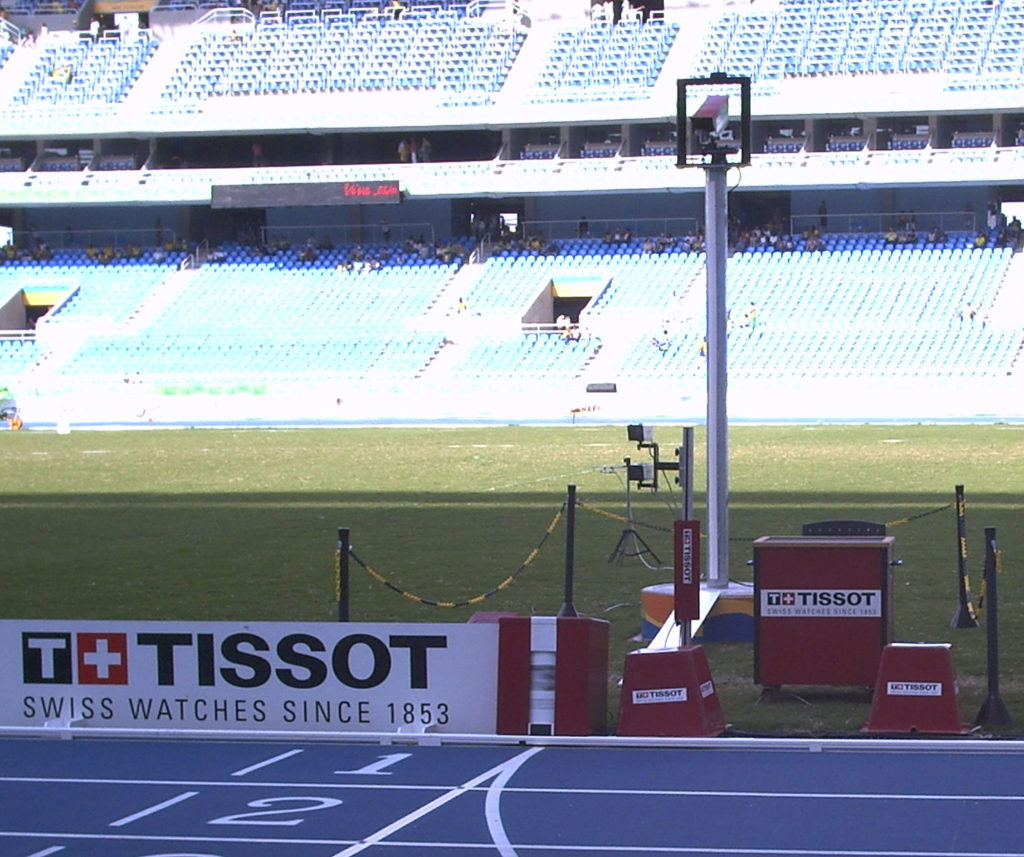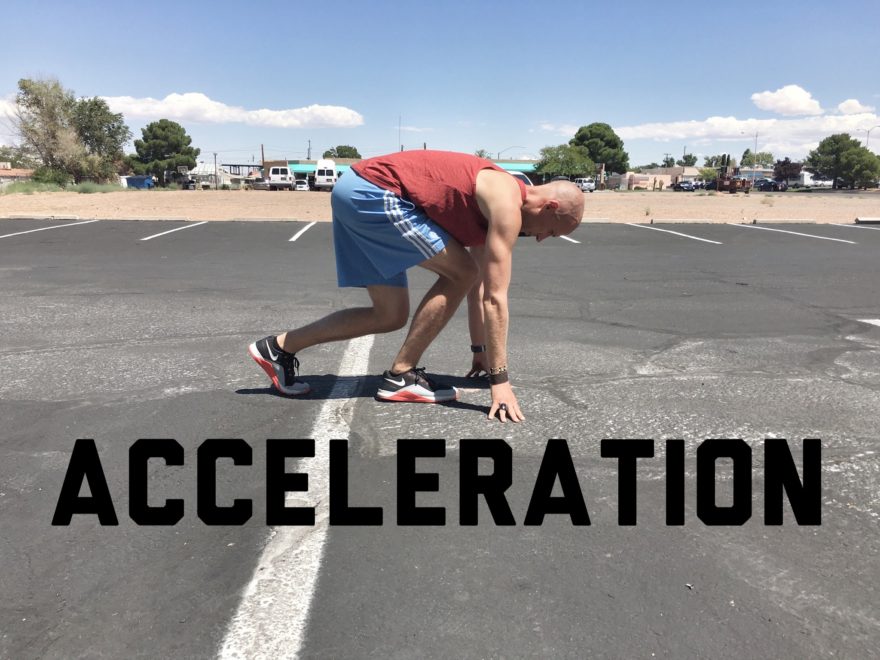I utilize a notecard system to help me organize similar material I come across from various resources. My intent over the next few years is to share and continually update these notecards with you.
This notecard is all about building the essential quality of acceleration.
Table of Contents
Acceleration Mechanics
“The ground is the well from which you draw speed” ~Dan Pfaff
- Rhythm – pace and steps should follow a crescendo (like a slow clap).
- Rise – There should be an incremental rise in center of mass (like an airplane taking off)
- Projection – the system continues to go forward1
Trunk Mechanics
The most important key to accelerating well is a fast and large first step2. It is this first step, and the distance gained from the first step, that initiates the desirable acceleration crescendo.
Keeping the body and shin angle at 45 degrees allows horizontal and vertical forces to merge in a manner that is necessary for acceleration2,3. If short, choppy steps are performed during this phase, then less force is applied into the ground.

Lower Extremity Mechanics
The leg and toe should stay low to generate push-off in the first few steps, though this is not something we wish to cue4. Some sprint coaches will cue dragging the toe to reinforce position, but this strategy is undesirable. Toe drag increases friction and slows the athlete down2.
Equally problematic is staying too low. If below 45 degrees, the athlete will step laterally instead of forward, simply because staying too low minimizes hip flexion range of motion2.
The feet ought to stay relatively underneath the body during acceleration. If legs begin to reach out in front of the athlete, the athlete will then slow down. Feet under the hips are accelerators, whereas feet in front of the body are brakes5
Upper Extremity and Neck Mechanics
From an upper body standpoint, the head and shoulders ought to also stay low, or the body will upright too early4. As the upper body rises, the chest should be visible before the chin1.

Early uprighting is typically related to reduced power output, sport-skill induced (e.g. a football lineman), or a potentially a neck issue6,7.
Arms ought to reach forward and out with each step. These mechanics are called frontside mechanics. This arm action reduces excessive backside mechanics (i.e. arms fall too much behind the body, driving extension) from occurring, which will prematurely upright the body7. Moving the hands first and fast can help create push-off from the backside leg4.
Eyes ought to fixate on a ground point 2-3m ahead of where the individual ought is going. If looking further forward, neck extension will prematurely uprights the individual, diminishing time spent in acceleration3.
Acceleration Energy Systems
Measuring Acceleration

Acceleration in Sport
Training Acceleration
Hill sprints
Sled Sprints
Prone Starts
Supine Starts
External Cue Sprint
Placing an object in front of the client that he or she must aim to sprint through can help create a larger first step. Ball drop activities can be useful in this case6.
Falling Starts
This technique can be utilized to encourage a large first step. A large first step is a reactive action that occurs to prevent the fall.
Typically, this drill was done being from an upright start, but the tendency for early rise and backside mechanics is much higher with this starting position. A better drive angle can occur if the client starts in a low position7:
Acceleration Technique Drills
- Start at shoulder height with the wrists
- Body is in a straight line
- 90 degrees hip flexion
- heel under hamstring
- Piston up/down emphasis6
That said, cleaning up arm mechanics oftentimes takes care of any inefficient leg mechanics, and is much easier to coach7. Since the wall drill fixes the arms onto the wall, the transfer amount to acceleration is questionable.
A perhaps better alternative could be a low box drill, which both allows for arm drive and places the athlete at an appropriate angle6.
Programming Acceleration
In an overall progression of things, many coaches favor the short to long method. That is, starting with shorter runs, then slowly increasing the distance of one run over time. A recommended acceleration-focused example of this would be starting at 5m and working up to 20m accelerations3.
Supportive Exercises for Acceleration
Sum Up
While far from exhaustive, the references that I have had the pleasure of learning from have taught me a great deal in regards to training and improving acceleration, and have helped me quite a bit with improving these qualities in my clients.
To summarize:
- Effective acceleration relies on force application into the ground
- Acceleration stops once maximum velocity is attained
- Maintain a slow, low rise upon increasing velocity
- Cueing arm forward and out arms actions is a simple and effective way to fix most acceleration errors
- Distances and durations for training acceleration ought to be short
Which techniques and resources do you draw from to cue acceleration? Comment below and I can add to this notecard.
References
- Stu Mcmillan. Altis Apprenticeship Coaching Program. 2016
- Dan Pfaff. Altis Apprenticeship Coaching Program. 2016.
- James Smith. Applied Sprint Training, 2014
- Lee Taft. Physical Preparation Summit. 2012.
- Mike Boyle. New Functional Training for Sports. 2nd edition. 2016.
- Lee Taft. Certified Speed and Agility Coach. Online. 2016
- Derek Hansen. Private Seminar. 2017.
- Buddy Morris on the Physical Preparation Podcast. 2015.

Hey Zac, great article! The cues I like to use are:
1.Explode off the block (to initiate the start)
2.Break the glass (For adequate knee drive) -Pretend there is a glass window above their knee)
3. Punch the ground
Keep up the great work!
Alex
I am definitely a fan of those cues as well. Believe those were favorites of Nick Winkelman as well!
Appreciate you commenting and the kind words my guy!
Zac